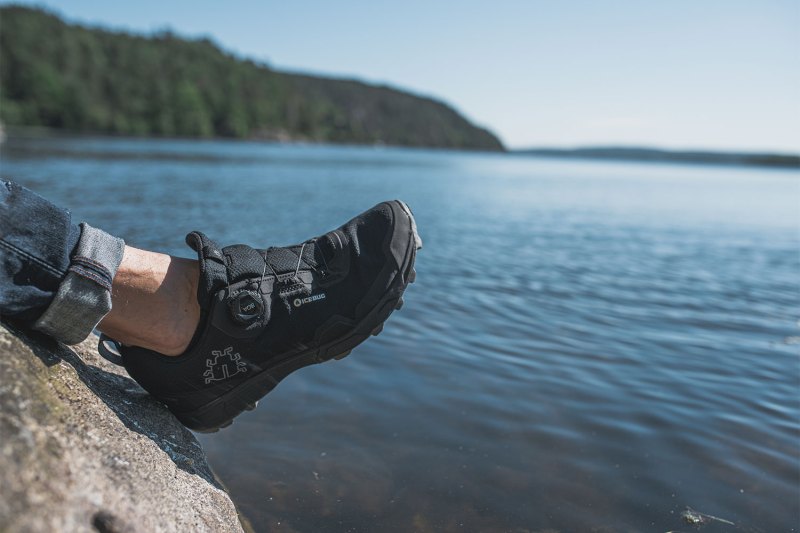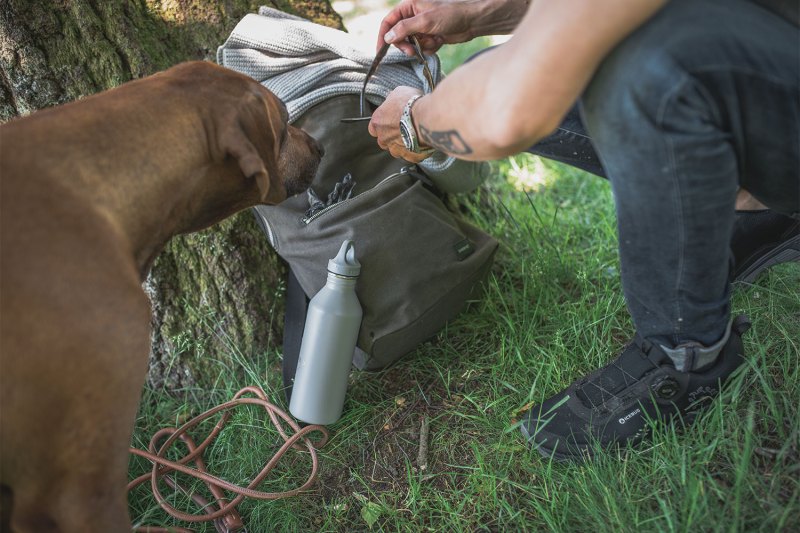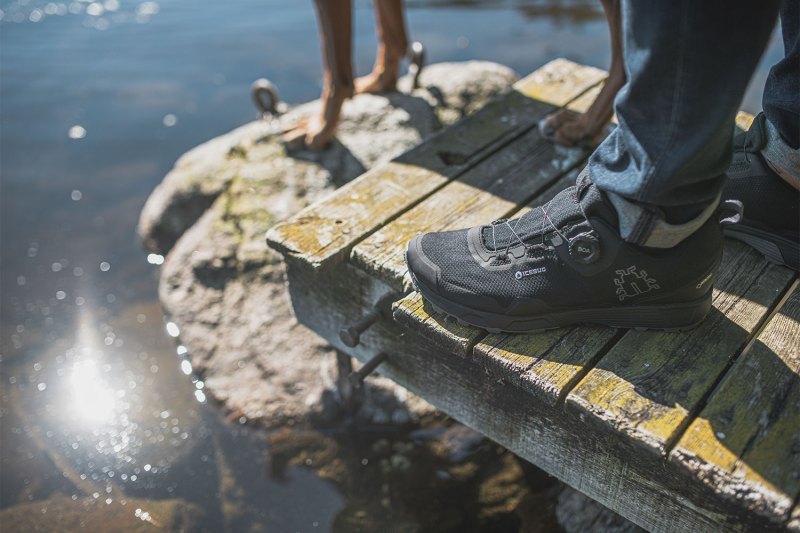To operate a business in the outdoors industry, a love for nature is pretty much required. You, your staff, and your clients spend every spare minute you can outside — hiking, running, walking, you name it.
However, it’s impossible to be an outdoorsy person in this day and age and not be constantly faced with the knowledge that our current consumption and buying habits are endangering the very wildernesses we cherish, in large part due to climate change. Something’s gotta give. That’s why one outdoor company is leading the way by becoming the world’s first climate-positive outdoor footwear company.
Icebug, based in Sweden and founded in 2001 by a mother-son pair, has up until now mainly been known for its outdoor and running footwear, which is designed with some of the best grip and traction in the business. The trademark steel studs and specially-patterned rubber outsoles, which offer outstanding grip on slippery surfaces like ice and mud, have earned them a cult following among ultrarunners, trail runners, and other outdoor sports enthusiasts and athletes.
But last year, the brand’s monumental achievement has also made them known for making the environment’s health as important as the company’s bottom line.

“When we made the decision, we plunged into the unknown. We didn’t know if it would cost 20 cents or 20 euros per shoe, but just felt that we had to do it,” CEO David Ekelund writes on the company website, where Icebug has made of point of putting its dedication to sustainability front and center with a whole informational section. “The climate crisis can’t wait for us to become perfect. We need to act now.”
Developing a product that encourages people to get outdoors, the environmental impact of Icebug’s shoes has long been at the forefront of its founders’ minds. In 2018, the team made its mission official by announcing a plan to be fully climate-positive by 2020. It was able to beat its original timeline and accomplish the goal by the spring of 2019.

“The fact that we have put a lot of effort into sustainability work during the past years of course helped, but in the end, the climate positive part was easier than we thought,” Ekelund explains.
Climate-neutral has become a buzz word in recent years as individuals and companies look for ways to reduce their carbon dioxide emissions and environmental footprints. By being climate-neutral or carbon-neutral, a company is able to balance or cancel out the emissions it produces through methods like carbon offsetting.
But being climate-positive takes things to a whole new level. It’s not enough to balance the scales; they need to be actively and constantly tipped in the planet’s favor.

In order for a product to be verified climate positive, it needs to conform to the guidelines of Climate Neutral Now, a United Nations-launched program aimed at measuring, reducing, and compensating carbon dioxide emissions in “production, transportation, and operations.”
Icebug has been able to achieve its climate-positive ranking primarily through carbon offsetting (financially supporting environmental projects around the world that remove or balance out CO2 emissions through methods like reforestation). The first step was figuring out the annual emission numbers (which included accounting for product manufacturing, transportation to and from factory and to customers, business travel, commuting, etc.) to know how much needed offsetting. Although it didn’t have the exact figures, it was able to make a rough estimate, and then for safety’s sake, overcompensated that number by 30% to ensure it was in the black for CO2 removal. For the 2018-2019 fiscal year, Icebug offset 4,755 tons of carbon dioxide equivalent, having estimated its total emissions to be under 4,000 tons and then adding the 30% overestimation. It also try to use recycled materials whenever possible.

It was the UN who reached out to inform the company that it was the first in its industry to take the leap to be climate-positive. For 2020, now that it has a better sense ofs carbon footprint, the plan is to more accurately measure emissions across all parts of its operations and then overcompensate by 10%.
But it’s not enough for just Icebug to make the leap to climate-positive; others need to follow. So Icebug has issued a challenge to other companies in the outdoor industry, as well as businesses in general, to take the pledge to follow the Climate Neutral Now initiative.
“We want maximum effect and that can only be achieved if others follow,” says Ekelund. “If we can succeed in getting climate positive, most brands around us can – if they want to. Now it’s time for companies to step up and take responsibility.”

And Ekelund also admits Icebug still has a long way to go, that offsetting isn’t a “free pass” and the brand is dedicated to the continued pursuit of sustainability by reducing emissions even more and being on the lookout for better, more sustainable materials and production methods, as it’s estimated that “90% of our CO2 footprint comes from our products.”
To learn more about Icebug’s sustainability mission, to purchase a pair for yourself, or to get further involved, visit its website.
Editors' Recommendations
- This All-American Boot Brand Prepares Men of Color to Step Out into the Great Outdoors
- How Keen Is Making Better Shoes and an Even Better Footprint
- 10 Companies Going Climate Neutral in 2021
- A Quick Overview of the Sustainable Adidas Outdoor and Five Ten Line Essentials
- Arc’teryx Wants to Buy Back Your Used Gear for the Good of the Planet



